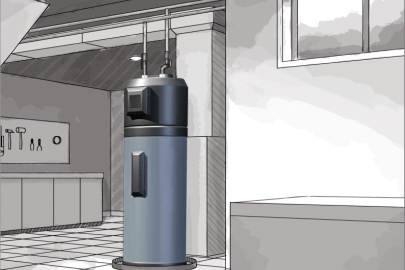Just how do you really feel in regards to How to Maintain a Hot Water Heater in a Few Simple Steps?

Warm water is essential for daily comfort, whether it's for a revitalizing shower or cleaning dishes. To ensure your warm water system runs successfully and lasts much longer, regular maintenance is key. This post offers sensible suggestions and understandings on exactly how to maintain your home's warm water system to prevent disruptions and costly fixings.
Intro
Preserving your home's warm water system may appear challenging, however with a few easy steps, you can guarantee it operates efficiently for many years to find. This guide covers everything from recognizing your hot water system to DIY upkeep suggestions and knowing when to hire professional help.
Significance of Preserving Your Warm Water System
Routine upkeep not just extends the lifespan of your warm water system yet also ensures it runs effectively. Ignoring upkeep can bring about decreased performance, higher energy expenses, and even premature failure of the system.
Signs Your Hot Water System Demands Upkeep
Recognizing when your warm water system requires focus can prevent significant issues. Keep an eye out for indicators such as irregular water temperature, unusual sounds from the heating system, or corroded water.
Flushing the Hot Water Heater
Flushing your water heater eliminates debris accumulation, boosting efficiency and prolonging its life.
Checking and Changing Anode Rods
Anode rods protect against corrosion inside the tank. Checking and changing them when worn is important.
Facility Concerns Needing Specialist Help
Instances include significant leakages, electric problems, or if your water heater is constantly underperforming.
Regular Professional Maintenance Perks
Specialist maintenance can include comprehensive assessments, tune-ups, and guaranteeing conformity with security criteria.
Evaluating and Adjusting Temperature Level Settings
Adjusting the temperature setups guarantees optimal efficiency and security.
Do It Yourself Tips for Maintenance
You can carry out numerous maintenance jobs yourself to maintain your hot water system in top problem.
Looking for Leaks
On a regular basis evaluate pipes and links for leakages, as these can lead to water damages and higher costs.
Understanding Your Hot Water System
Prior to diving into maintenance tasks, it's valuable to understand the fundamental elements of your warm water system. Usually, this includes the water heater itself, pipes, anode rods, and temperature level controls.
Month-to-month Upkeep Tasks
Normal monthly checks can aid catch minor issues before they intensify.
Examining Pressure Relief Valves
Examining the pressure safety valve ensures it operates properly and prevents excessive stress build-up.
Shielding Pipelines
Shielding hot water pipes decreases warmth loss and can conserve energy.
When to Call a Specialist
While DIY upkeep is beneficial, some concerns call for professional know-how.
Verdict
Routine maintenance of your home's warm water system is important for performance, longevity, and expense savings. By adhering to these pointers and recognizing when to look for expert help, you can make sure a trusted supply of hot water without unexpected disruptions.
How to Maintain an Instant Hot Water Heater
Before tinkering with your hot water heater, make sure that it’s not powered on. You also have to turn off the main circuit breaker and shut off the main gas line to prevent accidents. Also turn off the water valves connected to your unit to prevent water from flowing into and out of the appliance. 2. When you’re done, you have to detach the purge valves’ caps. These look like the letter “T†and are situated on either side of the water valves. Doing so will release any pressure that has accumulated inside the valves while at the same time avoid hot water from shooting out and burning your skin. 3. When the purge valves’ caps are removed, you have to connect your hosing lines to the valves. Your unit should have come with three hoses but if it didn’t, you can purchase these things from any hardware or home repair shops. You can also get them from retail stores that sell water heating systems. Read the user’s manual and follow it to complete this task properly. When the hosing lines are connected, open the purge port’s valves. 4. You should never use harsh chemical cleaners or solutions when cleaning your unit. Make use of white vinegar instead. It should be undiluted and you’ll probably use about 2 gallons. 5. Now flush your water heater. This task should probably take about 40 minutes. We can’t give you specific directions for this because the procedure is carried out depending on the type, model and brand of your heater. With that being said, refer to the user’s manual. 6. When you’re done draining the unit, you have to turn off the purge port valves again. Remove the hosing lines that you earlier installed on each of the water valves. Put the valve caps (purge port) back in their respective places and be very careful so as not to damage the rubber discs that are found inside these caps. 7. Now that everything’s back in place, check your user’s manual again to find out how to reactivate your water heating system. 8. Once it is working, turn one of your hot water faucets on just to let air pass through the heater’s water supply pipes. Leave the tap on until water flows smoothly out of it. https://www.orrplumbing.com/blog/2014/september/how-to-maintain-an-instant-hot-water-heater/

We hope you enjoyed our topic on Tips on Maintaining a Water Heater. Thanks a ton for taking the time to read through our post. Appreciated our content? Please quickly share it. Help another person discover it. Bless you for your time. Please pay a visit to our blog back soon.
Click Here